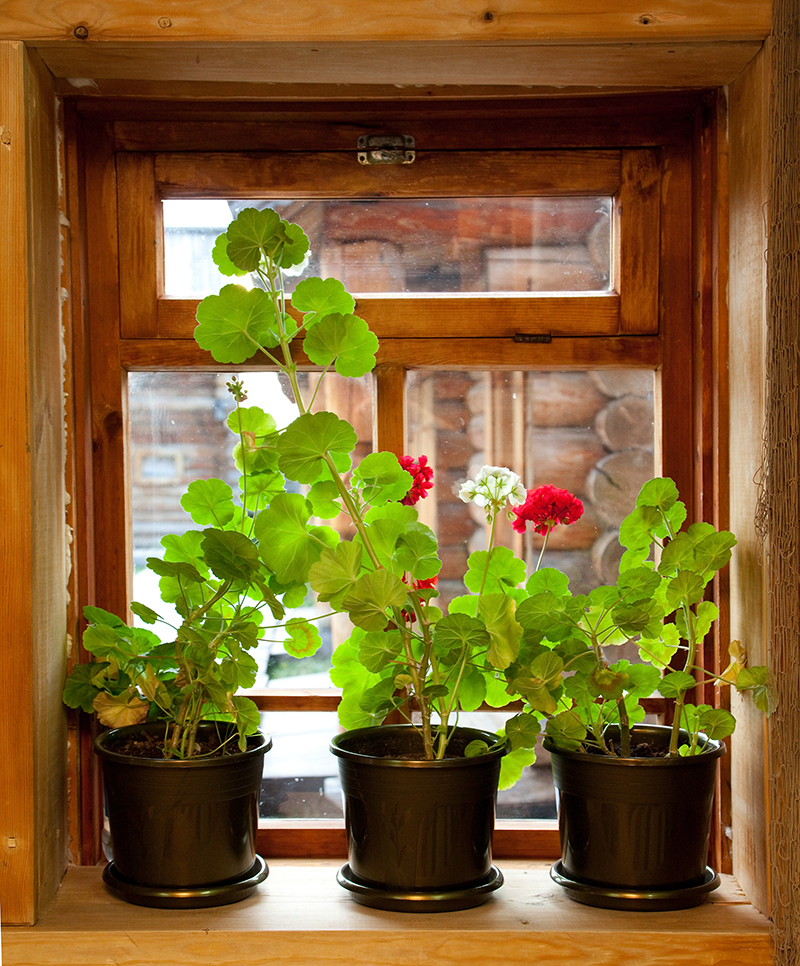Cold-Weather Gardening Tips
Posted on 21/02/2024
When the temperature drops our gardens often feel it, and in extreme cases, plants may die from frost. Those who live in colder climates have an even harder time growing their beloved plants. But cold weather doesn't mean the end of gardening. With the right tactics, gardeners can keep their outdoor plants alive and thriving through winter and beyond. Here are some cold-weather gardening tips to help you get the most out of your garden during winter months.
Choose Plants Suitable for Cold Weather
The first step to successful cold-weather gardening is selecting plants that are suitable for your climate. Look for varieties with extra hardiness or low chill requirements, such as pansies, roses and Camellias, which can tolerate cooler temperatures. Depending on your region, there are many other plants that can survive a colder climate, such as ornamental grasses, perennials and conifers. Research what types of plants thrive best in your area and take special note of any special care they may need to survive winter months.

Improve Plant Sheltering
Cold weather requires more sheltering than usual for outdoor plants--especially those located near windy areas. Try adding extra mulch or protective covers around vulnerable plants like shrubs and young saplings to provide additional insulation against strong winds and harsh temperatures. You should also consider covering larger trees with sheeting or plastic tarps secured tightly at the base to protect them from snowfall or heavy rain.
Maintain Good Water Practices
Watering practices are just as important during winter months as they are during summer months. Be sure to water regularly with slow streams of water directed at ground level rather than overhead to prevent freezing on leaves and stems; this helps maintain a source of hydration while protecting your plant's health from frost damage due to excessive wetness or cold air contact. Additionally, avoid pruning too much when temperatures drop--this will reduce your plant's ability to recover quickly if frost does occur.
Remove Weeds & Debris
Debris left behind by storms or falling leaves can harbor pests and create an unhealthy environment for both plants and soil alike--so clear away debris regularly before it has a chance to accumulate. Also inspect your garden regularly for weeds; removing these immediately will ensure they don't spread in colder months. Not only will this improve the overall look of your outdoor space but weeds can disrupt softer ground layers that protect root systems from deep freezes or frost damage.

Check for Hazardous Ice
Even if you've taken all appropriate measures to prepare your garden for winter weather, unexpected ice builds-up can be hazardous for plants--especially evergreens that greatly suffer from high levels of moisture accumulation on their needles and branches during icy conditions. Check around your garden frequently throughout winter months (as well as after storms), especially near bodies of water like ponds or streams where ice buildup is common, then remove any large chunks of ice manually if needed; try pouring hot water over large chunks instead of chipping away with a tool to reduce the risk of damaged plant material or broken branches impacting neighboring vegetation nearby
Ensure Your Garden Is Tidy Before Winter Sets In
To ensure gardens stay healthy year round, it's important to tidy up prior to winter setting in; remove dead foliage from trees and bushes into a compost bin so that areas remain uncluttered while providing beneficial nutrients back into the earth when spring arrives again! Remove any fallen fruit left by fruit trees too--these decaying items can attract pests during colder months which could ultimately bring down an entire garden should infections spread throughout its population quickly during those dense seasons when growth slows down even further than usual!
Following these tips will help you keep your garden looking great through the coldest months without compromising its health along the way; you may even find yourself pleasantly surprised at how beautiful nature can be during this lesser appreciated season! Whether you're dealing with extreme temperatures or just milder ones, taking precautions now will ensure that your outdoor space is ready come Springtime - allowing you enjoy yet another beautiful year outdoors surrounded by all the life you've cultivated through your gardening efforts!
Cover Plants During Frost
When temperatures reach near freezing, you'll need to cover your plants with a frost cloth or tarp. This will not only protect them from the cold but also from wind and snow. Secure the tarp in place with stakes to ensure it stays in place on windy days.
Protect Plants from Wind
Wind can sap plants of their moisture which causes them to dry out quickly during colder weather. Place garden stakes or stakes around plants to create a wind break for added protection. You can also plant hedges or shrubs to create a natural wind break.
Add Mulch
Adding leaves, straw or compost around the base of plants will insulate them and keep root systems warm. Be sure to remove mulch when the temperatures start to rise so the soil doesn’t overheat.
Use Cold Frames
Cold frames are small, portable greenhouses that are used to protect tender plants from colder temperatures and give them an extra boost of warmth in cooler months. They can be easily constructed out of wood, plastic or metal and moved as needed.
Protect Water Sources
Frozen water sources such as birdbaths and rain barrels need to be drained and covered when icy temperatures set in. Draining water sources will prevent them from freezing solid and cracking or bursting in extreme conditions.
Provide Shelter for Wildlife
Winter can be hard on wildlife, so provide shelter for birds and other animals by setting up birdhouses, brush piles, nesting boxes, etc., around your garden. This will help protect local wildlife against winter weather conditions while also providing additional sources of nutrient-rich organic matter for your garden beds.
Keep Weed Growth Down
Weeds can compete with more desirable plants for resources during cold weather months, so keep weed growth under control by regularly removing invasive species from your garden beds. You can also use mulch or landscape fabric to help smother weeds and make removal easier when necessary.
Check Soil Moisture Levels
Soil moisture levels need to be checked regularly during cold weather months since frosty temperatures can quickly draw moisture out of the ground. Check soil moisture levels using a soil moisture meter every few weeks and adjust your watering schedule accordingly if necessary.
Know When To Harvest
Some crops have specific harvesting times that will differ depending on what type you are growing in your garden. Don’t let a hard freeze get ahead of you; harvest vegetables when they’re ready to ensure maximum freshness and flavor before temperatures drop too low for further growth.
Prune & Thin Out Overgrown Plants
Late winter is a great time to prune trees, shrubs and other overgrown plants as they won’t begin growing again until springtime rolls around once more. Also consider thinning out dense areas of plant growth where air circulation is hindered as this will allow your remaining plants better access to vital sunlight and nutrients in the months ahead.
Bring Houseplants Inside
If you keep houseplants outdoors during summer months, bring them inside once temperatures start dropping below freezing outside as this will provide much needed warmth and protection against extreme cold weather conditions.
Test Your Soil pH Level
It’s important to test your soil pH levels prior to planting new crops as different varieties prefer different pH levels for optimal growth- soil that is too acidic or alkaline may prevent seeds from germinating properly in extreme cases!
Collect Freezing Rainwater
Collecting rainwater when it falls is a great way to save money on water bills during winter months; however, take care not to collect any freezing rainwater as this could cause pipes or containers used for storage to burst due to expansion caused by ice build-up inside of them!
Avoid Foot Traffic Through Garden Beds
Avoid placing foot traffic through planted areas during colder months as this may compact soil which can hinder root growth when springtime arrives once more.
Utilize Containers
Take advantage of containers by bringing houseplants indoors or using smaller planters for herbs and vegetables on porches or decks that don’t experience frosty conditions throughout winter- this way you can still enjoy gardening even while snow covers most of your yard!
Be Careful With Ice Melting Agents Sodium chloride based ice melts are very effective at melting ice but using too much may kill nearby vegetation- apply sparingly and avoid contact with sensitive plants (and pets!)
Create Ponds & Water Features Ponds and water features such as bubbling fountains are excellent additions to gardens no matter what season it is- not only do these bring beauty but they also provide much needed hydration for thirsty wildlife who may wander into your backyard looking for sustenance!
Pay Attention To New Plantings Newly planted crops should receive special attention throughout winter months as they may require additional warmth or protection from extreme temperatures; check up on these frequently or use a cloche (or some other form of temporary shelter) if necessary!
Stay Positive & Have Fun! Winter isn’t an end all be all for gardening- with the right preparations you can continue maintaining an outdoor oasis even through bone chilling temps! Take time each day (or even just a few minutes!) To enjoy the beauty around you while tending your garden- after all there’s nothing quite like being greeted by a bright bloom amidst freezing foggy morn!




